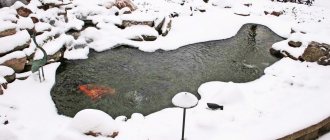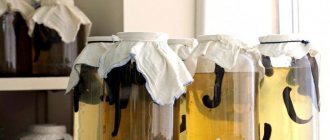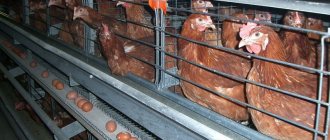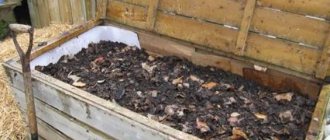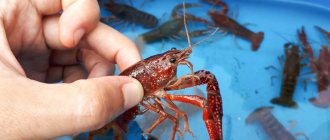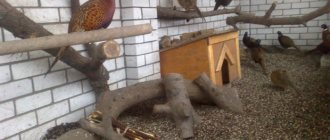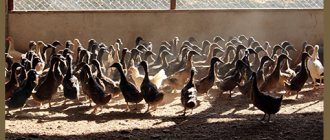Immersion in the topic
The agricultural industry provides an opportunity to build a business not only in fur farming and poultry farming.
Breeding carp at home can be a good start for organizing your own fish farm. If things work out on a small scale, you can think about expanding the business to production scale. Register for a free marathon
How to create passive income in 4 days
A marathon where you will create passive income live from scratch and learn specific strategies for investing in apartments, houses, garages, cars and even profitable sites
Begin
Carp is a fish that has tasty and healthy meat. It contains vitamins and microelements beneficial to the human body. Fishing has an equally positive impact on people. It can be organized on a personal pond as an additional line of business. Breeding carp at home for fishing is no less profitable and exciting.
Why is carp attractive for home fish farming?
To explain why this particular fish was chosen, here are a few positive features of its habitat in ponds:
- Carp is an unpretentious fish that can survive in unfavorable conditions. If the winters are harsh, then it simply goes into hibernation, which slows down all processes in the body. Carp survive the cold at the bottom of the reservoir, hiding in a layer of silt. When preparing a pit at home for stocking fish, it is necessary to place it partly in the sun and partly in the shade. When the air temperature rises above +30 degrees in summer, the fish will have somewhere to hide. The depth of the reservoir may not exceed 1.5 meters, although the deeper it is, the more comfortable it is for any fish. The recommended length and width is 3x3 meters. Growing carp is impossible without partially replacing the water in the pond.
- Compared to other fish species, carp grows quickly. In just two years you can get a herd that is completely marketable. The weight of fish ready for sale is usually 1.5-2 kg, which is considered quite large specimens. There have been cases when growing carp was successful with 25 kg of live weight! But this is the exception rather than the rule.
- Carp are ready to breed between approximately three and five years of age. For each individual, this period may begin at a different time. Spawning lasts about 30 days. The number of eggs a female reproduces depends on her age. The warmer the water in the pond, the shorter the incubation period.
- Under natural conditions, carp are not picky eaters. It eats river mollusks, larvae and even plant seeds. Growing carp for sale or for fishing at home requires complementary feeding. It is advisable to give food to the fish in one place. This will then make them easier to catch.
You can train on adult specimens caught in the nearest body of water. Having learned to feed them correctly, it will be easier to cope with the fry later.
Financial components of business
Breeding carp in a pond as a business at its initial stage does not require much investment. No more than 62,000 rubles is enough for all expenses.
A pool with a mirror surface area of one hectare can accommodate up to 250 kilograms of fry. This will require from 17,000 rubles. From 20,000 rubles will have to be spent on arranging the reservoir and purchasing special equipment.
Over a three-year period, the total weight of fish grown will be 2,500 tons. You can get several thousand eggs from one fish. According to statistics, a small part of them will survive, but this amount is enough to avoid spending money on re-purchasing fry, and if they are timely separated from adult fish, even make money on their sale.
The average cost of fry is 70,000 rubles per ton. Fish weight gain begins only two years after stocking. It is also worth considering that carp weight gain stops when the water temperature drops. The advantage of growing this type of fish is its unpretentiousness to food. A ton of feed will cost an entrepreneur 10,000 rubles. With a competent approach to business, you can reach a 20 percent profitability, which is considered an excellent indicator in this type of business.
Pros and cons of a business idea
✅ Benefits of breeding pond fish:
- Interesting manufacturing business
- Opportunity to receive grants from the state
- Prospects for growth and development
❌ Disadvantages of pond fish breeding:
- High investment at the start
- Reputational risks
- The need to establish long-term distribution channels
Breeding pond fish can be an interesting and profitable business if you approach it thoroughly. Live fish requires a careful approach at all stages from breeding fry to marketing the finished product. But the profit can also be very pleasant. Good luck to you!
Business benefits
Of all the fish species, only carp is unpretentious in keeping. It can survive even in the harshest conditions by entering a state of hibernation. From a fry, you can grow fish weighing up to two kilograms in two years. It is easy to feed fish, focusing on providing it with larvae, mollusks and plant seeds. It can reproduce without the need for a number of measures that are relevant in such a situation for other species of waterfowl.
The market for carp sales is stable, since the product is always in demand, but to ensure high sales figures, a reputation must be developed.
You can raise fish not only for sale, but also as entertainment for tourists, having previously organized a recreation area with paid fishing. The business quickly pays off and, if the entrepreneur does not want to bother with breeding, he can purchase two-year-old fry in the spring and raise fish for sale until the fall.
How to choose a supplier
The main fish for breeding in ponds is not only carp, but also its closest relatives - grass carp and silver carp. You can purchase the first batch of pond fish from the nearest fish farm, and then you just have to rely on your own strength.
Carp is unpretentious and gets along well in most bodies of water. One-year-old fry are suitable for settling in a pond; they are also good for adding adult fish to a pond.
Focus on fisheries that deal primarily with carp species. The choice of farms nearby will also be important. This way, you will not only save significantly on transportation costs, but also reduce the risks associated with transportation. To begin, purchase a batch of fry for 100,000 rubles.
Business Disadvantages
Among the disadvantages of business, one can note the documentation of activities, which requires inspections and laboratory tests, as well as the need to register a business, pay required mandatory payments to the budget and submit reports.
Arrangement of the reservoir
In the process of carp breeding, difficulties with its maintenance may occur. Despite the unpretentiousness of the fish, it is still necessary to maintain certain conditions, without which there is a high probability of death of the fish. The entrepreneur will have to constantly monitor the temperature, oxygen content in the water and other key factors.
We are building a reservoir
And you should fill it with water only if you are completely sure that the soil in the place where the pit is dug will not slide or collapse.
For such cases, pegs made of wood or willow saplings are driven in so that the edges do not collapse; it is also possible to cover the edges of the reservoir with large pebbles, if any.
If you are completely and completely confident that the soil will allow you to make a pond, then you should turn your attention to construction. If you are convinced of the strength of the entire structure, then feel free to fill it with water.
To launch the firstborns, there is no need to rush; the reservoir must warm up and meet the standards for carp breeding.
Drawing up a business plan
Despite the fact that breeding carp at home is not difficult, the activity must be approached seriously and each stage must be planned, recording it in a business plan.
The document is especially relevant in the absence of personal funds to start, when you have to look for alternative sources of financing. A mandatory condition for lending is the provision of a project, since each lender wants to know where his money will go, how reliable such an investment is and what is the likelihood of non-repayment of funds.
The business plan should provide clear information about the demand for fish, the presence of competitors and the use of strategies that would distinguish the organizer of the activity from their background. It reflects information about the list of registration, permitting and contractual documentation that must be completed. At the project stage, the entrepreneur needs to decide on the type of reservoir to be used, the suppliers of feed, or the search for alternative methods of producing it on their own. A mandatory section in a business plan is the financial one, from which the parameters of income and expenses become clear, as well as their ratio, which determines the profitability of the activity.
What equipment to choose for growing carp
If you install a pool in a heated room, you can breed carp at any time of the year.
A startup in this direction will require significant investments. This is due to the high cost of equipment.
The area of the room in which the pool can be installed depends on the planned production volumes.
To grow 5 tons of fish per year, you will need a minimum of 25 square meters.
Enterprising fish farmers managed to build pools even in basements.
The main requirement is the presence of heating, electricity and a ventilation system.
Documenting
The list of papers required to start a business is determined by the format of its operation. Growing carp at home for yourself does not require documentation, provided that the fish will be bred in an artificial reservoir on a plot of land that has the status of personal property.
To conduct an activity that involves making a profit, you will need a biological justification that determines the conditions under which fish farming is possible. The organizer of a business needs to give it official status by registering it. You will also need to obtain a license and permits from the SES, indicating that the condition of the reservoir meets the regulated requirements, and the water quality meets the standards. It costs about 10,000 rubles to complete all types of papers. At the sales stage, you will also need to undergo product quality control, confirmed by documents drawn up in a regulated format.
Prices for fish for your farm
Now about the most important thing: purchasing carp for your farm. There are several options here.
Firstly, the easiest way is to buy carp seedlings, these are fry from 14 to 40 grams. And all this costs about 150-200 rubles per kg.
Secondly, you can catch the fry in the fall in a regular pond, and in the spring put them in your artificial pond.
Thirdly, the most profitable, but at the same time very difficult, is to buy fertilized eggs and incubate them yourself. You can order 100 thousand fertilized eggs for about 25,000 rubles. True, if the farm is just starting out, then it is better not to take risks, since this, however, is very difficult.
The biggest disadvantage of fish farming is the long payback period for your investment. Therefore, we advise you to first use the 4th option along the way, namely: buy two-year-old fish weighing up to 200 grams, it will cost much more. But in 1 season you can fatten the carp to marketable condition.
HOW MUCH CAN YOU EARN?
| Check | USD, Wed. per cycle* | %, on Wednesday. per cycle |
| Gross revenue | 100 000 | 100 |
| Expenses | 67 100 | 67,1 |
| Including: | ||
| – for the purchase of fry | 10 400 | 10,4 |
| - for staff salaries | 30 300 | 30,3 |
| - to the stern | 6 700 | 6,7 |
| - other expenses | 19 700 | 19,7 |
| Profit (excluding taxes) | 32 900 | 32,9 |
A farm that has grown 25 tons of carp and sold it at a price of 120 rubles per kg can expect this result. The carp growing cycle is 3 years.
Preparation of the reservoir
Fish can be grown in natural or artificial reservoirs. For this purpose, it is convenient to use abandoned ponds in rural areas. However, when planning a business in this format, you will have to draw up a number of permits for the reservoir. You will not be able to purchase it, since such actions are prohibited by law. Water resources can be leased. To conclude an agreement on the temporary use of a reservoir, you need to prove to local authorities your ability to care for it, so you should prepare a business plan for your project in advance, displaying information about the planned methods of purifying water from algae and reeds.
Providing conditions of detention
Depending on the type of pond, the bottom may need to be cleared. One of the conditions for the administration to transfer the property for rent may be the improvement of one shore as a beach, which is important for large ponds. You will also need to provide letters of guarantee for concluding agreements for the provision of technical assistance or documents for the purchase of special equipment.
How much can you earn
Initially, you should calculate the costs.
The fry will cost 10-12 thousand rubles, wage costs – 30 thousand, food – 8 thousand and about 20 thousand more for other expenses. The total is about 70 thousand rubles. To this are added the costs of renting or purchasing a pool. The profit of such a business depends on many factors and, based on the cost estimates indicated above, is about 100 thousand rubles per month. As a result, we have a net profit of 30 thousand rubles, excluding pool rental. The payback period is one of the disadvantages of such a business and is more than one year.
Optimal conditions of detention
To ensure rapid growth of carp, optimal conditions must be maintained. The temperature should not exceed +30 degrees. When it is exceeded, the amount of oxygen in the water decreases, as a result of which the fish begins to suffocate. At low temperatures, carp become slower and begin to consume less feed, which affects weight gain.
The pond must contain aquatic plants, the main purpose of which is to provide darkness and oxygen saturation of the water.
The optimal depth of the reservoir is 1.5 meters. It warms up completely, as a result of which the fish eats normally and gains weight. Very deep bodies of water do not warm up completely, which causes unstable temperature conditions.
Carp breeding
full-fledged producers in the conditions of cultural pond breeding of carp . In the southern regions, sexual maturity of carp occurs much earlier: in the Krasnodar Territory, for example, at the age of three. In Indonesia, carp spawn when they are one year old.
Pictured is a scaly carp
The process of spawning in carp fish is repeated annually and usually occurs at a water temperature of 18 ° C. However, when the eggs of the carp are ripe, spawning is possible at a lower temperature. In practice, there have been cases when carp, planted for spawning, did not spawn even at temperatures of 20°C and above. When the time comes, sexually mature females approach the spawning grounds, spawn eggs, and male carp fertilize them with milt. Some of the milk penetrates the eggs, and the rest die after about a minute. Unfertilized eggs also die, which after 10 hours acquire a whitish-cloudy color and then quickly decompose. The carp spawns eggs in 2-3 portions. The eggs are sticky, 1.4-1.5 mm in size, and stick to the vegetation of the reservoir.
The success of fish reproduction largely depends on spawning conditions. Carp, for example, in the absence of meadow vegetation or in the presence of vegetation that has been under water for a long time, often does not spawn. The same thing happens in the presence of an acidic environment in spawning ponds.
To obtain a large number of offspring (juveniles), special conditions for breeding carp are created in spawning ponds that correspond to the biological characteristics of the fish of this species. In pond farms, isolated spawning is organized (planting fish of the same species in spawning ponds), guaranteeing the preservation of the largest possible number of eggs and juveniles.
Based on the type of spawning, carp are classified as schooling carps - they gather in large herds to spawn. In the conditions of pond breeding of carp, the following types of reproduction are distinguished:
Types of carp reproduction
- Pair propagation is used in the breeding of carp or carp.
- Nest breeding, the most common, is used for both carp and other fish. Typically, a nest is formed from 1 female and 2 males.
- Group breeding of carp. Common when breeding carp, silver crucian carp, and tench. Several females and males are planted for spawning.
Experience shows that obtaining a high yield of juveniles per 1 kg of female carp weight is possible both during group and nest spawning.
The advantages of group spawning are that with this method, greater selectivity of fertilization is achieved, reducing by 2 times the number of males in the farm, since not two, but one male can be released for each female. For group spawning, the area of each spawning pond should be 0.15-0.20 hectares (at the rate of 0.05 hectares per female), and the planting should be 3-4 nests or 3-4 pairs of breeders.
In large farms for group spawning, spawning ponds with an area of 0.3 hectares are allowed, with six pairs of spawners planted in each pond at the rate of 0.05 hectares for each pair. Large-area spawning ponds are more preferable not only because their construction requires less capital investment, but also because it is easier to use mechanization in them for liming, fertilizing, harrowing in the spring, as well as mowing vegetation in the summer. Obtaining high practical fertility largely depends on the skill of the fish farmer.
| On a note. A fish farmer from the Belgorod region used mowing of vegetation in spawning ponds. With group spawning, based on planting one female per 0.05 hectares of pond, he received 160-190 thousand eight-day-old fry from each female Kursk carp. He left only a strip 1-4.5 m wide near the dam unmowed. Farmed carp laid their eggs on this strip of vegetation, and the larvae emerged into open water to feed. |
Drawing of Kursk scaly carp
In practice, the fertility and yield of commercial fry from one female also largely depends on the rearing conditions of the producers. From four-year-old first-spawning females of Kursk carp weighing 2.5 kg each, raised in good conditions, during group spawning in wintering ponds, from 127 to 192 thousand fry per female were obtained, or from 28.2 to 42.6% of absolute fecundity.
Growing technology
Carp can be grown using several technologies, each of which is characterized by a certain type of reservoir, feeding and approach to the implementation of the process. Today there are three known growing methods:
- extensive - in ponds;
- semi-intensive - in cages;
- intensive – in closed complexes.
The best results are shown by growing fish in a semi-intensive way in cages. Breeding according to this scheme is possible only in the warm season, but the profitability of the activity in the first year will be at around 10 percent.
Marketing and possible distribution channels
As mentioned above, there will be no problems with the sale of such popular products. But the buyer will not come to you himself. Some marketing activities will still have to be carried out. This could be advertising in fishing stores, catering establishments where your fish will be offered, creating your own website and advertising on social networks.
In addition to the sales channels mentioned at the beginning of the article, you can open your own retail outlet - a separate store, or just a tent in the market. From time to time, competitions can be held for the largest fish caught by weight, with valuable prizes for first places. Your profit from such events will be advertising fees from sponsors.
Feeding
Three year old fish for sale
When growing fish in natural reservoirs, you don’t have to worry much about its nutrition. She will be able to live without feeding, finding the microorganisms and nutrients she needs in the depths of the pond. However, with such a feeding scheme, the carp will not quickly gain weight and, as a result, will not reach the levels that are relevant only for growing it on special food. It contains protein and protein in balanced quantities, which must be added to food in the third year of cultivation, during the period of increased growth. Until this time, you can use regular feed.
When breeding carp at the dacha in a reservoir specially dug for this purpose or in a swimming pool, it is necessary to count on its full supply of diet, since there are no alternative food options in such conditions.
The main food is natural plankton, which can be fed all year round. During the period of rapid growth of the food supply, observed in the summer, in natural ponds it may not be added to the diet.
Purchasing fry, caring for fish, and feeding
Subtleties of buying fish
Buying carp, as they say, “from hand” is the best thing you can do. To ruin your business before you even start it. The price, of course, is somewhat lower than in officially registered nurseries, fish farms and farms, but if the fish suddenly turns out to be sick or too young, i.e. instead of “two-year-olds” they will slip you a one-year-old carp, you can only complain to yourself and about yourself.
The entire purchased batch of fish must have a certificate confirming its quality. Check out reviews from other buyers on online sites, or better yet, meet them in person, because reviews can always be faked.
Carp growing technology
Growing carp in a pond at the dacha, or in other conditions, is actually not that difficult. As we said at the beginning of the article, you really only need to monitor the temperature of the water, the oxygen content in it, and, of course, feed the fish on time. During the mating period, you need to place “families” of one carp and two females in a separate pond, and after the fry appear, transfer the adult fish back into the common pond, otherwise the fry will simply become food for them.
Feeding the fish
By nature, carp is a very cautious and timid fish. Experienced fishermen understand what we are talking about. But fish born in captivity quickly get used to their new owners, so there shouldn’t be much trouble with feeding. Feeding schedule: twice a day, morning and evening. The daily food intake is approximately 3% of the total weight of the fish.
Food cannot simply be thrown into the water, it must be placed in a special feeder so that the fish cannot drag it all over the reservoir, as a result of which rotting food remains will poison the water and the fish itself.
There are three ways to feed carp:
- Extensive, in which the carp lives “on everything natural”, i.e. feeds on what it finds in the pond itself - vegetation, insect larvae, etc. The method is absolutely cost-free, but the result of such feeding will be skinny fish, not very attractive either for fishing or for cooking.
- Semi-intensive. In this case, oats are added to the natural food. Barley, wheat, any cereals are generally not an expensive option either.
- Intensive. With this method, carp are fed exclusively with poultry or pork feed, which helps the fish quickly gain weight and make it suitable for sale. The only negative is that the compound feed, according to some gourmets, gives the fish meat an off-flavor.
Paid eco ponds with hotel business
This is a very popular business direction, which involves providing clients with fishing and related services, in particular, hotel houses, for a fee. This business will generate good, almost passive income, provided that the reservoir is popular among local residents and guests. Therefore, for rent you should choose those lakes and ponds that have been visited by a large number of amateur and professional fishermen for a long time. By entering into a water use agreement with the regional government, you simply begin charging fees on a previously free body of water.
The cost of paid fishing at your place should not differ greatly from similar offers on the market in order for your business to be competitive. On average, fishermen pay 250-600 rubles for using the pond, taking all the catch they catch with them.
Houses and gazebos for recreation are additional income for the owner of a paid pond.
You, as the owner of the pond, replant fry, feed and raise healthy fish, keep the area clean, and arrange the pond. As related services, visitors to the paid pond can be offered holiday houses, barbecues, tents, boats, catamarans. Hotel houses, as a rule, are made of frame panels - firstly, the construction of permanent structures is prohibited by federal laws and regulations that determine the way of using recreational areas, and, secondly, it is cheap and fast.
Project costs and profits
Required:
- A fully equipped pond that you can dig with your own hands, the main thing is that you have the desire.
- Equipment – capacitors, lamps.
- The carp themselves - fry - are the cheapest, but it is more profitable to buy teenage carp that will be a year or two old - then they will pay for themselves in the same year.
- Feed – you don’t have to spend money on compound feed, which is expensive and gives the fish meat a strange taste, but buy cereals and vegetables that can be steamed and used as feeding.
All this will cost about 20,000 rubles (if you already have land and don’t have to buy it, then, of course, it will be more expensive). The profit, taking into account the fact that a kilogram of product costs about 200 rubles, and it costs about a hundred fry to buy at once, will be about 40,000 rubles .
At the same time, it is worth leaving the fish for breeding, then the enterprise will become completely self-sustaining, and you will not have to buy new fry.
Why should you start carp farming?
Many novice entrepreneurs decide to breed carp rather than any other fish because such a business has many advantages. The advantages include:
- Unpretentiousness of fish . Indeed, carp are very tenacious. It is able to grow and develop even in a shallow body of water without any amenities.
- Minimum amount of knowledge . Even a novice entrepreneur who does not have special knowledge and skills will be able to understand carp breeding.
- Rapid reproduction . It is believed that carp could fill all rivers if their fishing stops. In terms of their reproduction speed, they can be compared to rabbits. A female carp can produce up to 300,000 eggs at a time. With a survival rate of even 10%, the number of her offspring will be 30,000 individuals.
- Stability of demand . Carp is a fairly popular fish among Russians. Therefore, the demand for it always remains quite high. It is noteworthy that it can be sold not only to stores, but also to catering outlets - restaurants, cafes.
- Fast payback. This possibility exists in the case of purchasing fry over the age of 2 years. Otherwise, you will have to wait several years for profit.
- Additional sources of income. You can raise carp fry for their subsequent resale to other entrepreneurs.
When wondering whether it is profitable or not to engage in carp breeding, an entrepreneur must remember some of the difficulties of running such a business. The main disadvantage is the rather long preparatory stage. After all, the entrepreneur will have to deal with the purchase or lease of land for the reservoir, and its improvement. It will also take time to register a business, purchase fry and study the peculiarities of their cultivation. It will be quite difficult to pass preliminary environmental examinations to determine the purity of the water and the condition of the fish.
It is better for an entrepreneur to consider the possibility of breeding carp in a natural reservoir. The use of cages, pools and other closed water supply installations will be burdened with the need to constantly monitor water temperature and oxygen supply. There will be other important factors that you will have to provide yourself.
